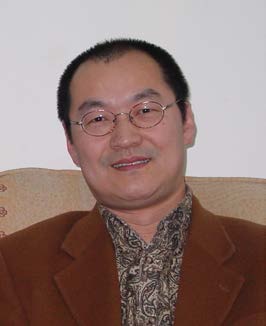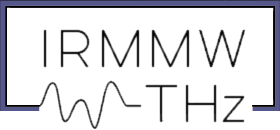Hui-Chun Liu
Hui-Chun Liu was known for his groundbreaking work with semiconductor quantum devices, Hui-Chun Liu passed away on 23 October 2013, at age 53 in Shanghai, China; he had taken a bad fall and was in a coma the last nine days of his life. His sudden and unexpected death is a shock to the physics community.
Known to colleagues as H.C., he was born in Taiyuan, China, in 1960. He received his BSc in physics from Lanzhou University in 1982. After success-fully passing the selection process for the second-year China–US Physics Examination and Application program, H.C. went to the University of Pitts-burgh, where he received his PhD in applied physics in 1987 in the group of Daryl D. Coon. His major research interest was semiconductor nanoscience and quantum devices.
H.C. joined the Institute for Microstructural Sciences of the National Re-search Council Canada as a research associate in 1987 and rose rapidly through the ranks. In 1998 he was named to lead the council’s terahertz and imaging devices group and in 2000 he became a principal research officer – the highest rank, reserved for very few. In 2011 he returned to China to take a position at Shanghai Jiao Tong University, where as a chair professor he put together a new research group. H.C. had been recruited through the “1000 talents” program, which brings top-class minds to China from over-seas. He founded two high-tech companies in China: Debut Optoelectronic Sensors in Wuxi, and Ghopto Shanxi Guohui Optoelectronic Technology in Taiyuan.
Among H.C.’s honors were the Herzberg Medal from the Canadian Association of Physicists in 2000, the Bessel Prize from the Alexander von Humboldt Foundation in 2001, and the Jiangsu provincial high-level innovation-entrepreneur talent award in 2011. H.C. was granted more than a dozen patents, wrote or co-wrote more than 380 articles in refereed journals, and gave 95 invited presentations at international conferences. When H.C. was still in graduate school in the 1980s, the field of intersub-band transitions in semiconductor quantum wells was born. H. C. was one of the founders of the field of quantum well infrared photodetectors (QWIPs). As a junior researcher at National Research Council Canada, he started a world-leading re-search program on QWIPs. The ultrafast QWIP technologies he developed are being used in leading research laboratories and industries, including Harvard University, ETH-Zürich, and Northrop Grumman. His patented upconversion pixel-less im-agers have attracted considerable attention, as has his pioneering extension of QWIPs into the terahertz spectral region.
H.C.’s name has become synonymous with QWIP. He edited two volumes of the series Semiconductors and Semimetals and wrote a monograph on QWIPs. He served as chair or co-chair of various QWIP workshops, was twice chair of the International Conference on Intersubband Transitions in Quantum Wells, and was a member of several steering and advisory committees overseeing the strategic development of terahertz technology in China.
In addition to his laying the foundations for the field of QWIPs, H.C. demonstrated two-photon absorption in QWIPs, studied various nonlinear optical phenomena through intersubband transitions, and developed an intersubband Raman laser. Early in his career, he did innovative analysis on resonant tunneling di-odes. More recently, he was focusing on terahertz quantum cascade lasers and, with his collaborators, achieved a record-high operating temperature, which is significant, since increasing the lasers’ operating temperature is the most important challenge in the field.
H.C. was like a brother to many of his colleagues around the world. A unique leader, he was generous with and fiercely protective of his staff, was attentive to their well-being, and knew instinctively how to draw out the best skills of each team member. He instilled a sense of common purpose in all. His calm and positive demeanor greatly influenced his colleagues and especially his students.
H.C.’s unfailing support and loyalty will be deeply missed, and he will al-ways be fondly remembered.
Tucson, September 2014 Harald Schneider, Qing Hu, Emmanuel Dupont, Xi-Cheng Zhang, Chao Zhang, and Jun-Cheng Cao

Year:
